Seek out some of the best autumn foliage in the temples of Kyoto Prefecture
Time required : 2 days
- Japanese Culture
- Outdoor
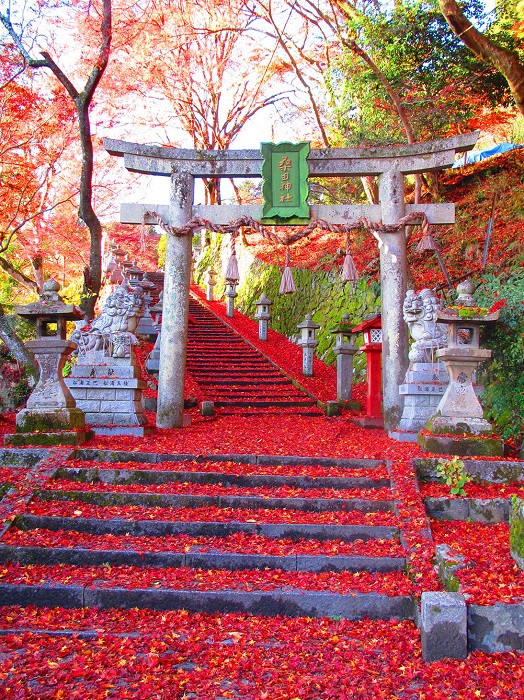
The perfect course to get away from it all and discover the enchanting variety of colors of autumn foliage in Kyoto. This course will take you through some of the shrines and temples in Kyoto's Tea Country and Woodland regions with some of the most spectacular displays of colorful leaves. On day two, enjoy a charming ride through the valley on the Sagano Romantic Train to one of Kyoto's famous autumn sights in Arashiyama.
Day 1
JR Osaka Station
45 min. by train
Iwashimizu Hachimangu Station
1 min. walk
Cable-hachimangu-guchi Station
3 min. by train
1Iwashimizu Hachimangu
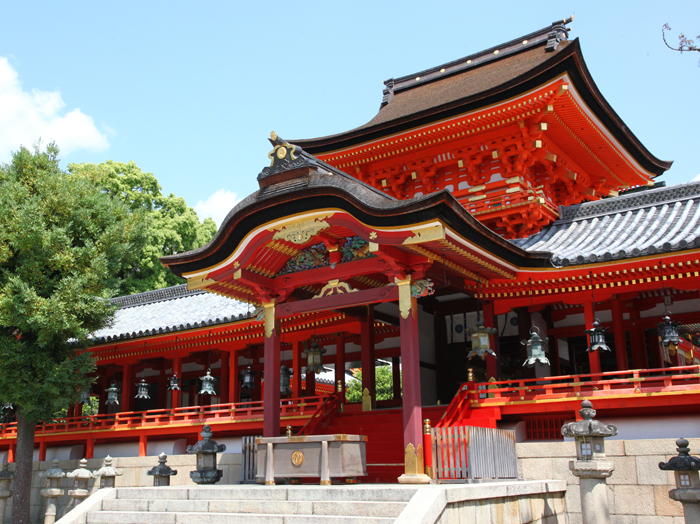
Iwashimizu Hachimangu is one of the three major Hachimangu shrines. This majestic shrine, with a nearly 1,200-year history, is considered Japan's second most important shrine after Ise Jingu (Ise Shrine). The shrine is dedicated to Hachiman Okami, believed to be ancestors of the emperors of Japan. Since ancient times, Hachiman Okami have been deeply revered as guardian deities of Kyoto and the nation in this shrine. This profound reverence has been passed down through generations of emperors as well. It was also a sacred place of worship for some of the most famous samurai warriors in history. The Minamoto clan (Genji), who established the Kamakura shogunate (1185-1333), highly respected Hachiman Okami as their tutelary deities. Even after the fall of the Minamoto clan, Iwashimizu Hachimangu has remained one of Japan's most important shrines to this day. Moreover, it has National Treasures including the main building of the complex, which is adorned with intricate, colorful carvings. In its long history, the building complex was renovated by Oda Nobunaga, and the cloisters were built by Toyotomi Hideyoshi and Hideyori. The current complex was rebuilt by Tokugawa Iemitsu and completed in 1634. It is the oldest and one of the largest surviving Hachiman-zukuri (a traditional Japanese architectural style seen at Hachimangu shrines) in Japan. The shrine holds a special place in Japanese history, and is also a visually stunning place. It offers amazing views of cherry blossoms in spring, and a beautiful contrast of fall foliage and evergreen trees in fall. At the entrance of the shrine at the foot of the mountain, there is a 9-meter-tall stone gate called Ichi-no-Torii. On the upper part of it, you'll find a tablet with kanji (a Chinese character) of “hachi (八)”, in “Hachimangu (八幡宮)”, written in the shape of two pigeons. Actually, pigeons are considered as messengers of the deities, Hachiman Okami. Pigeons can be found hidden as motifs throughout the shrine. You can even find adorable pigeon-shaped omikuji (small items containing fortune-telling slips) and omamori (Japanese amulets).
- Tel
- 075-981-3001
- Address
- 30 Yawata Takabo, Yawata City, Kyoto
- Access
- Train: From Iwashimizu-hachimangu Station (Keihan Main Line), take the cable car (from Cable-hachimangu-guchi Station to Cable-hachimangu-sanjo Station) and walk for 5 minutes.
Car: about 20 min. from Kumiyama-Yodo Interchange
20 min. walk
2Zenporitsuji Temple (The Maple Tree Temple)
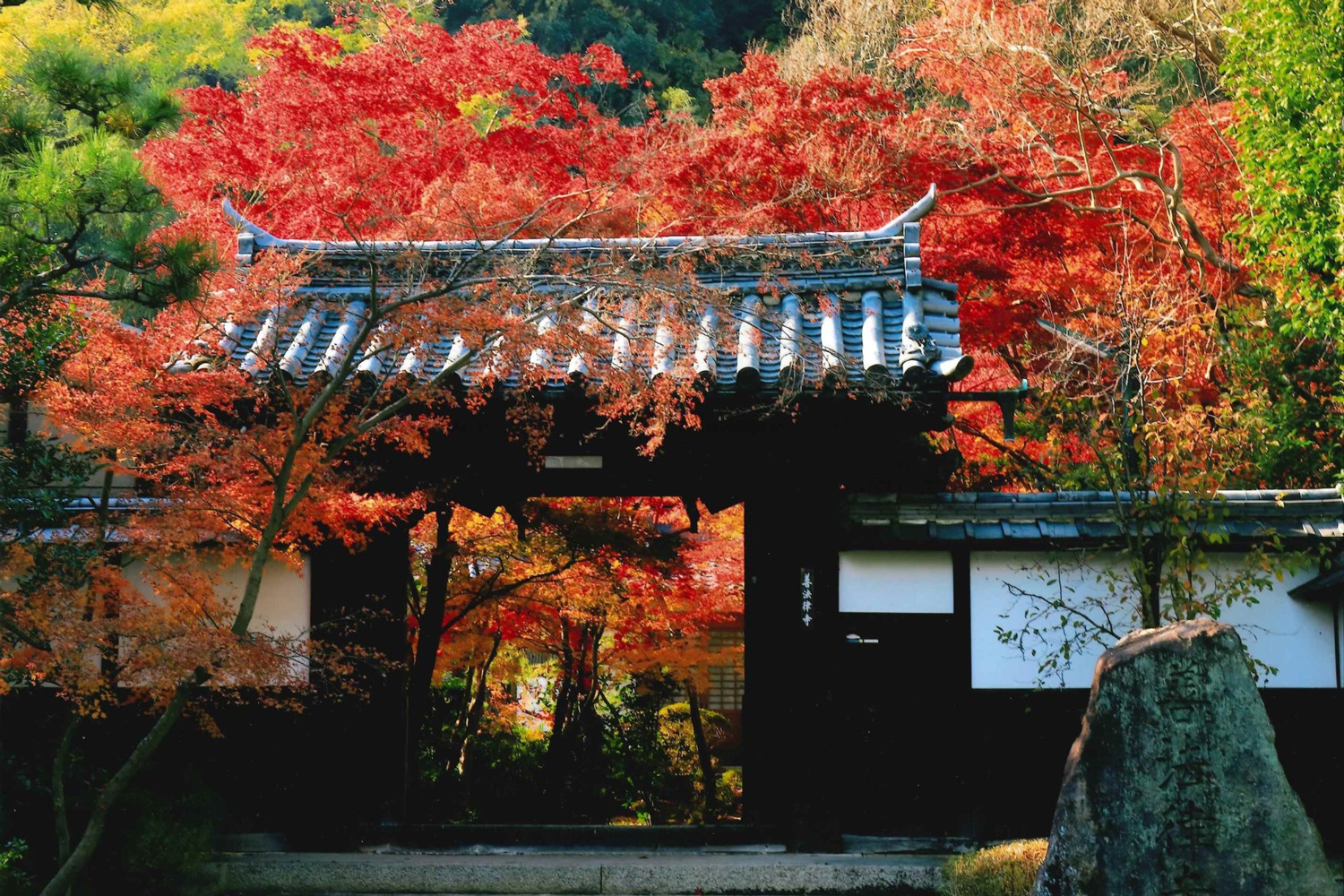
Zenporitsuji Temple, located in the southeast of Iwashimizu Hachimangu, was founded in the mid-thirteenth century, as Zenpoji Kyusei, the top administrative official of Iwashimizu Hachimangu at that time, donated his residence to establish a bodaiji (family memorial temple). Upon its founding, Jisso Shonin, a high priest of Todai-ji Temple in Nara, was invited. Ki no Yoshiko, a great-granddaughter of Zenpoji Kyusei, married Ashikaga Yoshiakira and gave birth to Ashikaga Yoshimitsu, the third shogun (military ruler) of the Ashikaga shogunate, which deepened the temple’s ties to the Ashikaga family. Ki no Yoshiko donated many momiji (Japanese maple) trees to the temple, and they were planted on the precincts. Even now, the leaves of about 100 momiji trees turn red, creating a beautiful view in the fall. This stunning autumn display earned the temple the fascinating nickname of Momijidera (the maple tree temple). The temple’s main hall and main gate are designated as Cultural Properties of Kyoto Prefecture. In addition, the temple has 9 Cultural Properties of Yawata City, such as a statue of the deity Hachiman, large statues of Buddhist Wisdom Kings Fudo Myo-o (Acala) and Aizen Myo-o (Rāgarāja), and a statue with a jeweled crown Amida Nyorai (Amida Buddha). (Reservations are required to view the interior of the main hall.)
- Tel
- 075-981-0157
- Address
- 88-1 Yawata Baba, Yawata City, Kyoto
- Access
- Train: Get off at Iwashimizu-hachimangu Station (Keihan Main Line) and walk for about 15 minutes.
Bus: Take Keihan Bus from Keihan Iwashimizu-hachimangu Station. Get off at Hashiagari, and walk for about 5 minutes.
Car: From Oyamazaki Junction on the Meishin Expressway, proceed to Keiji By-pass. From Kumiyama-Yodo Interchange, drive for about 10 minutes.
15 min. walk
Iwashimizu Hachimangu Station
50 min. by train
Keihan Uji Station
15 min. walk
3Koshoji
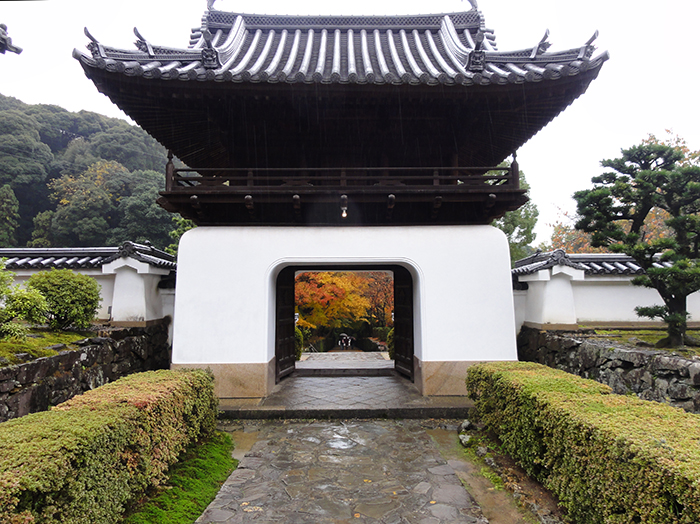
This Soto Zen temple was a training monastery opened in Fukakusa (Fushimi) by the Buddhist monk Dogen Zenji in 1233. It was rebuilt in Uji in 1645 by Nagai Naomasa, the lord of Yodo Castle at that time. Interestingly, the temple was built using the remains of Fushimi Castle. In addition to the seven-hall complex, the Kotosaka slope is wonderful as well. It’s the quaint approach from the stone gate to the Sanmon gate, where many visitors enjoy the tunnel of fall foliage or summer greenery. Other highlights include the Sanmon gate built in Ryugu-zukuri (architectural style reminiscent of Dragon Palace Castle that appears in Japanese folklore); the corridor of Uguisu-bari (squeaking hallway floor making a sound like the chirp of a nightingale, which is said to have been made to alert those within earshot to the danger of an intruder) and the Chitenjo (bloody ceiling); the Tenarai Kannon bodhisattva that is believed to have been enshrined at a historical site of the classic literature, The Tale of Genji.
- Tel
- 0774-21-2040
- Address
- 27-1 Uji Yamada, Uji City, Kyoto
- Access
- Train:
-About 12 min. on foot from Uji Station (Keihan Uji Line)
-About 20 min. on foot from Uji Station (JR Nara Line)
Car:
- Coming from Osaka/Kobe:
From Tennozan Tunnel (Oyamazaki Junction) on the Meishin Expressway, proceed to Keiji By-pass. From the Uji-nishi exit, drive for about 10 minutes.
- Coming from Tokyo/Nagoya:
From Seta-higashi Junction on the Meishin Expressway, proceed to Keiji By-pass. From the Uji-higashi exit, drive for about 5 minutes.
JR Uji Station
Day 2
JR Uji Station
45 min. by train
Umahori Station
15 min. walk
4Kuwata-jinja Shrine
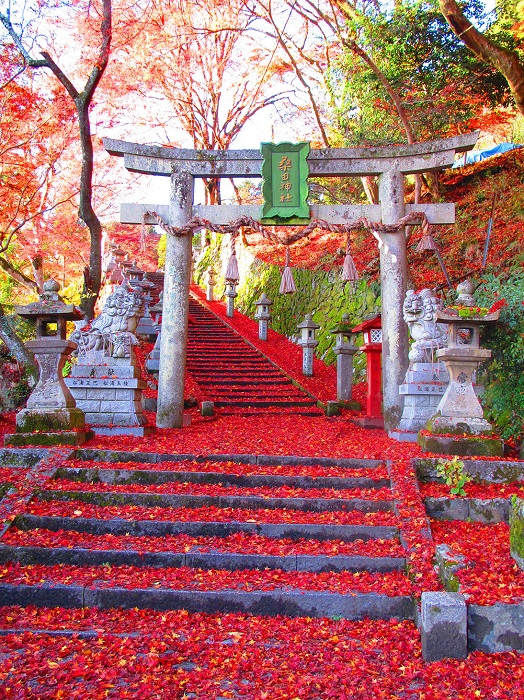
Kuwata-jinja Shrine in located in Yamamoto, Kameoka City, Kyoto Prefecture. It was listed in the government's official compliation of shrines, the "Engi-shiki Jinmyo-cho," and it was formerly ranked as a "village shrine." The mountainside behind Kuwata-jinja Shrine, which stretches to the entrance to the Hozukyo Gorge, is covered in an forest of evergreen beeches and oaks, which, together with the Hozu-gawa River flowing below, makes for some marvelously soothing scenery.
- Tel
- 0771-25-3881
- Address
- 5 Yamamoto Kitajo, Shino-cho, Kameoka City, Kyoto Prefecture
- Access
- Approx. 15 minute walk from Umahori Station on the JR Sagano Line
7 min. walk
Torokko Kameoka Station
5Sagano Romantic Train
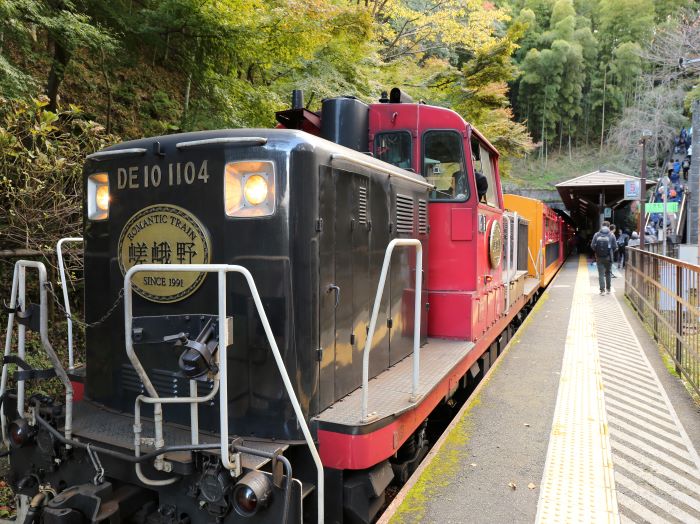
The Sagano Romantic Train is a sightseeing train that uses the old Sanin train line. From Torokko Saga Station to Torokko Kameoka Station, the train covers 7.3 kilometers in about 25 minutes, with mountain cherry blossoms and fresh green in the springtime, the voices of cicadas and the sound of the rain and river in the summer, brilliant autumn leaves in the fall, and snowy scenery in the winter—perfect for taking in the best of the seasonal scenery along the Hozukyo Gorge.
- Access
- Torokko Saga Station:
Just outside Saga-Arashiyama Station on the JR Sagano Line
Torokko Kameoka Station:
10 minutes walk from Umahori Station on the JR Sagano Line
30 min by train
Arashiyama
